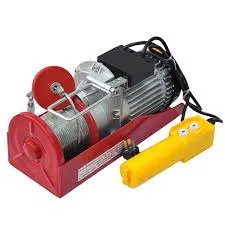


The Importance of Overhead Crane Weight Scales
Overhead cranes play a crucial role in various industrial settings, from manufacturing and assembly lines to warehouses and shipyards. One of the essential features that enhance the functionality and safety of these cranes is the weight scale. An overhead crane weight scale provides real-time data regarding the weight of the loads being lifted, thereby ensuring safe operations and efficient productivity.
First and foremost, the safety aspect of using a weight scale in overhead cranes cannot be overemphasized. Overloading a crane beyond its rated capacity is a leading cause of workplace accidents and equipment failure. An accurate weight scale helps operators determine the exact load weight, allowing them to make informed decisions and avoid overloading. This not only protects personnel on the ground but also extends the life of the crane and reduces maintenance costs. Therefore, incorporating a weight scale is essential for adhering to safety regulations and minimizing the risk of accidents in the workplace.
In addition to safety, having an overhead crane weight scale enhances operational efficiency. In industrial environments, time is often of the essence. Without a weight scale, operators would need to estimate or manually weigh loads, which can be time-consuming and prone to errors. With a built-in weight scale, operators can instantly see the weight of the load, enabling quicker decision-making and streamlining the lifting process. This efficiency leads to increased productivity, as tasks can be completed faster and more accurately.

Moreover, having real-time weight data enables better inventory management. In manufacturing and shipping industries, knowing the weight of materials and products is crucial for logistics and transportation planning. An overhead crane equipped with a weight scale allows for precise tracking of loads, contributing to accurate inventory counts and reducing the likelihood of discrepancies. This capability is particularly beneficial for businesses that have strict shipping specifications and need to avoid costly penalties due to overloading transport vehicles.
Additionally, overhead crane weight scales often come with integrated technological advancements such as digital displays, wireless connectivity, and data logging features. These enhancements allow operators and managers to keep detailed records of lifted loads, analyze trends over time, and make data-driven decisions that can improve overall operational workflow.
In conclusion, the incorporation of overhead crane weight scales is a significant advancement that enhances safety, improves efficiency, and supports better inventory management in industrial settings. As industries continue to evolve, the demand for precise load management will remain paramount. Investing in high-quality weight scales for overhead cranes is not only a matter of compliance but also a strategic step towards optimizing operational excellence and ensuring workplace safety. Adopting these systems equips businesses to tackle the challenges of modern industry confidently and securely.



